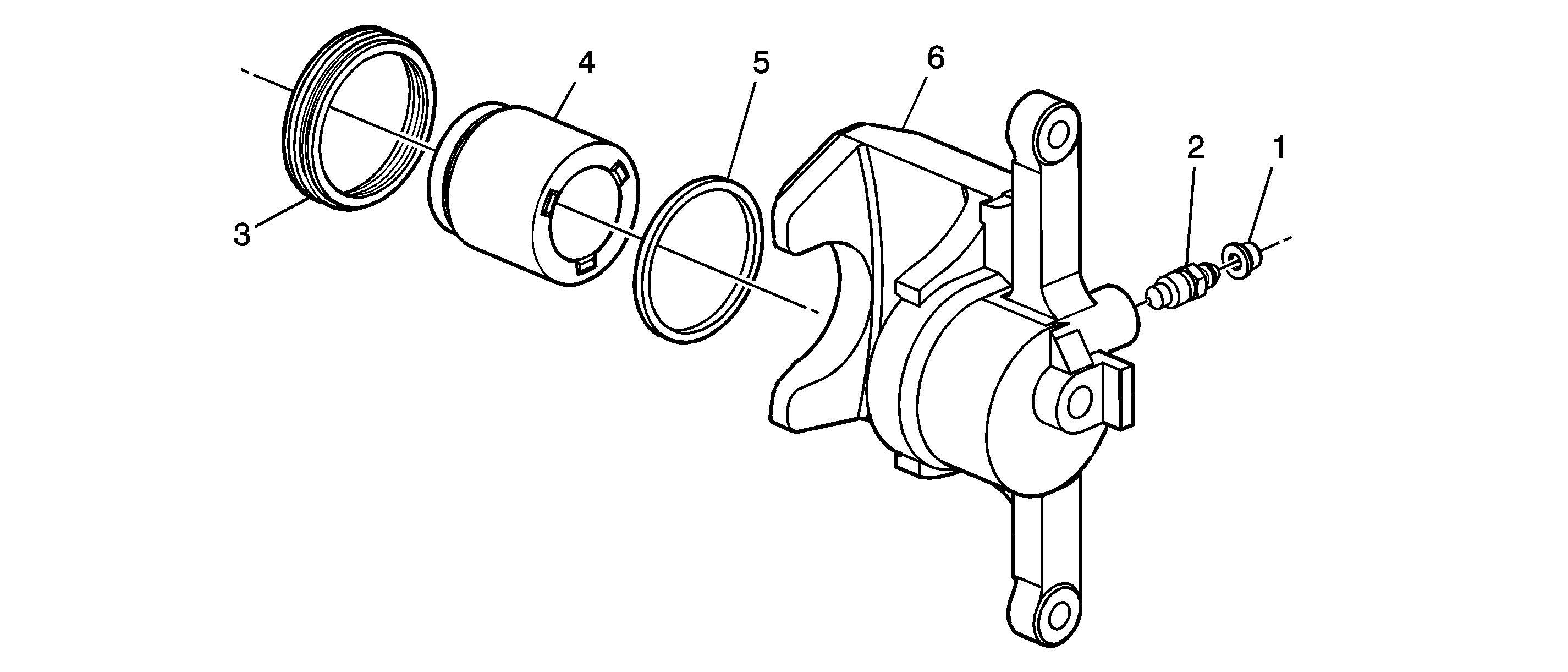Callout
| Component Name
|
|
Caution: Refer to Bleed Procedure Caution in the Preface section.
Caution: Refer to Brake Dust Caution in the Preface section.
Caution: Refer to Brake Fluid Irritant Caution in the Preface section.
Notice: Refer to Brake Fluid Effects on Paint and Electrical Components Notice in the Preface section.
Notice: Refer to Fastener Notice in the Preface section. Fastener Tightening Specifications:
Refer to
Fastener Tightening Specifications
.
Preliminary Procedure
- Raise the vehicle. Refer to
Lifting and Jacking the Vehicle
.
- Remove the rear disc brake caliper. Refer to
Rear Brake Caliper Replacement
.
|
1
| Cap, Rear Brake Bleeder Valve
|
2
| Screw, Rear Brake Bleeder Valve
Tighten
10 N·m (86 lb in) |
3
| Boot, Rear Disc Brake Caliper Piston
|
4
| Piston, Rear Disc Brake Caliper
Tip
| • | Do not use abrasives to clean the brake caliper piston or the disc brake caliper bore. |
| • | Place a block of wood against the inside of the caliper body, opposite of the caliper piston, then direct low pressure compressed air through the caliper inlet port to remove the caliper piston. |
| • | During installation apply a thin coat of Delco® Supreme 11 GM P/N 12377967 (Canadian P/N 992667), or equivalent DOT-3 brake fluid from a clean, sealed brake fluid container onto the outer surface area
of the caliper piston. |
|
5
| Seal, Rear Disc Brake Caliper Piston
Tip
- Use a small wooden or plastic tool, carefully remove the rear disc brake caliper piston seal from the groove in the caliper seal bore.
- During installation lubricate the new piston seal with Delco® Supreme 11 GM P/N 12377967 (Canadian P/N 992667), or equivalent DOT-3 brake fluid from a clean, sealed brake fluid container.
Use a small wooden or plastic tool, carefully remove the rear disc brake caliper piston seal from the groove in the caliper seal bore.
|
6
| Caliper, Rear Disc Brake
Tip
- Inspect the caliper bore and housing for cracks, scoring, pitting, excessive rust, and/or excessive corrosion. If any of these conditions are present in the caliper bore or housing, replace the caliper assembly.
- If light rust or light corrosion are present in the caliper bore, attempt to remove the imperfection with a fine emery paper. If the imperfection cannot be removed, replace the caliper assembly.
- Clean the brake caliper piston bore and seal counterbore, the caliper piston, and the caliper sleeves with denatured alcohol, or equivalent.
- Bleed the brake system anytime the system is opened for repairs. Refer to
Hydraulic Brake System Bleeding
.
|

